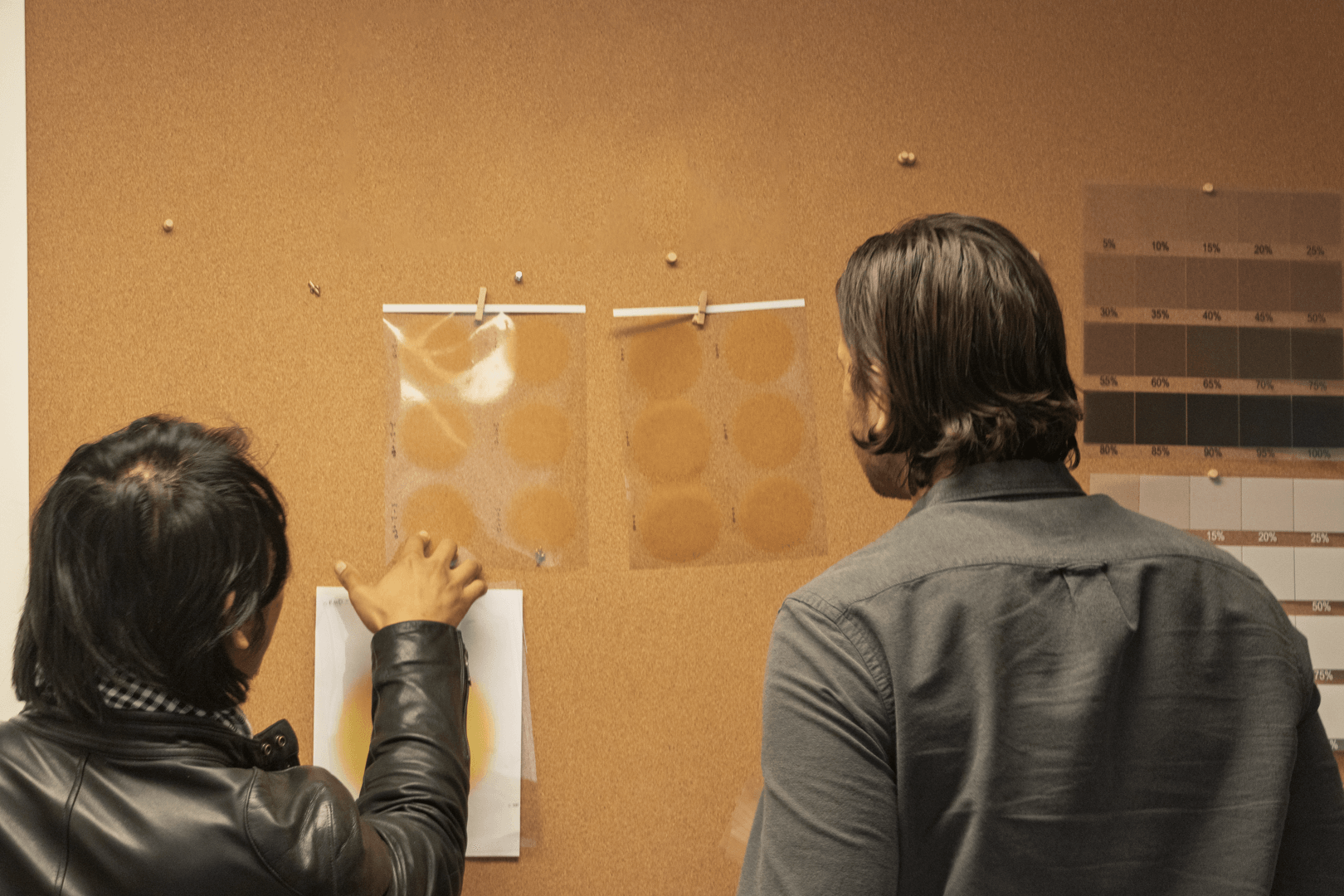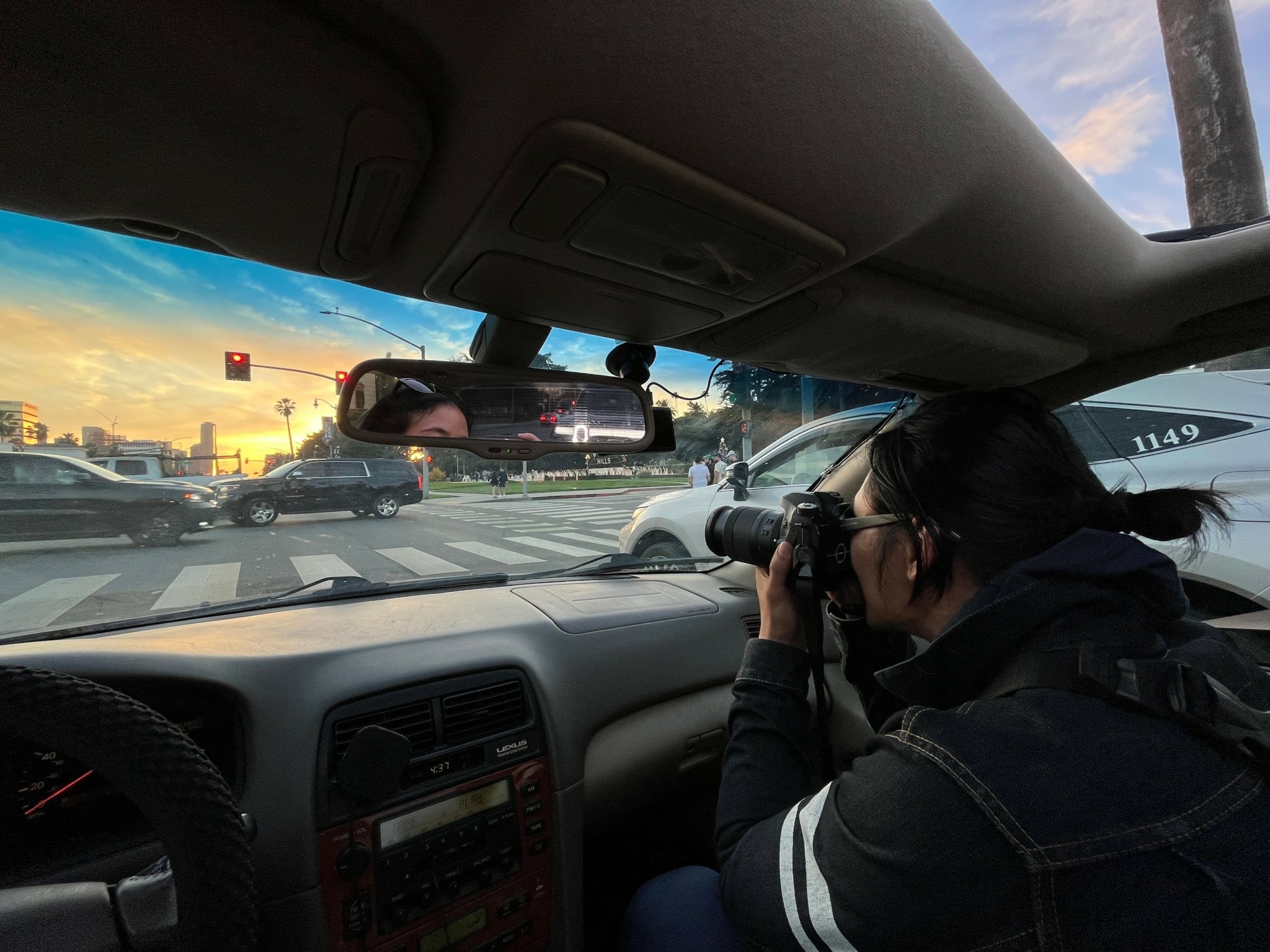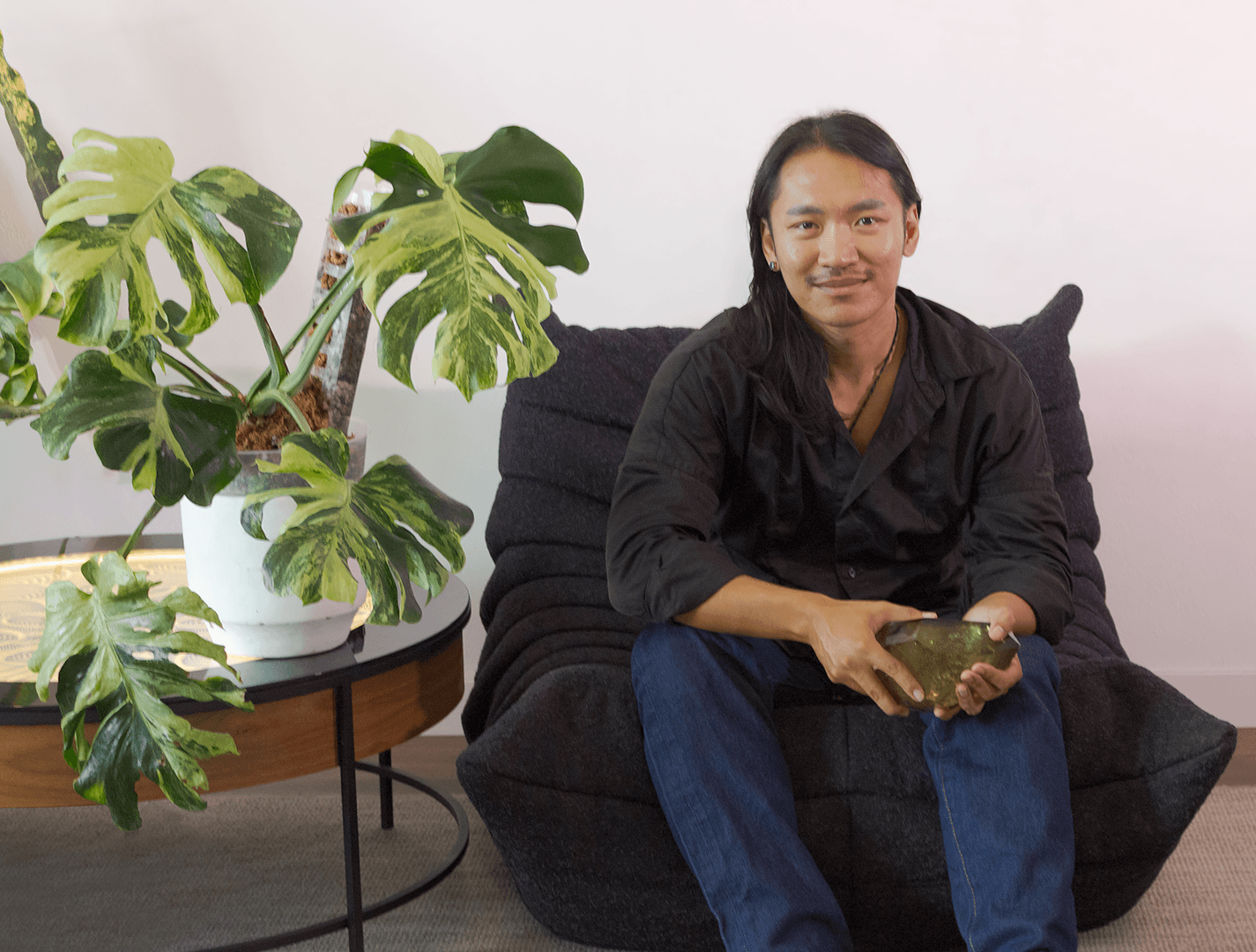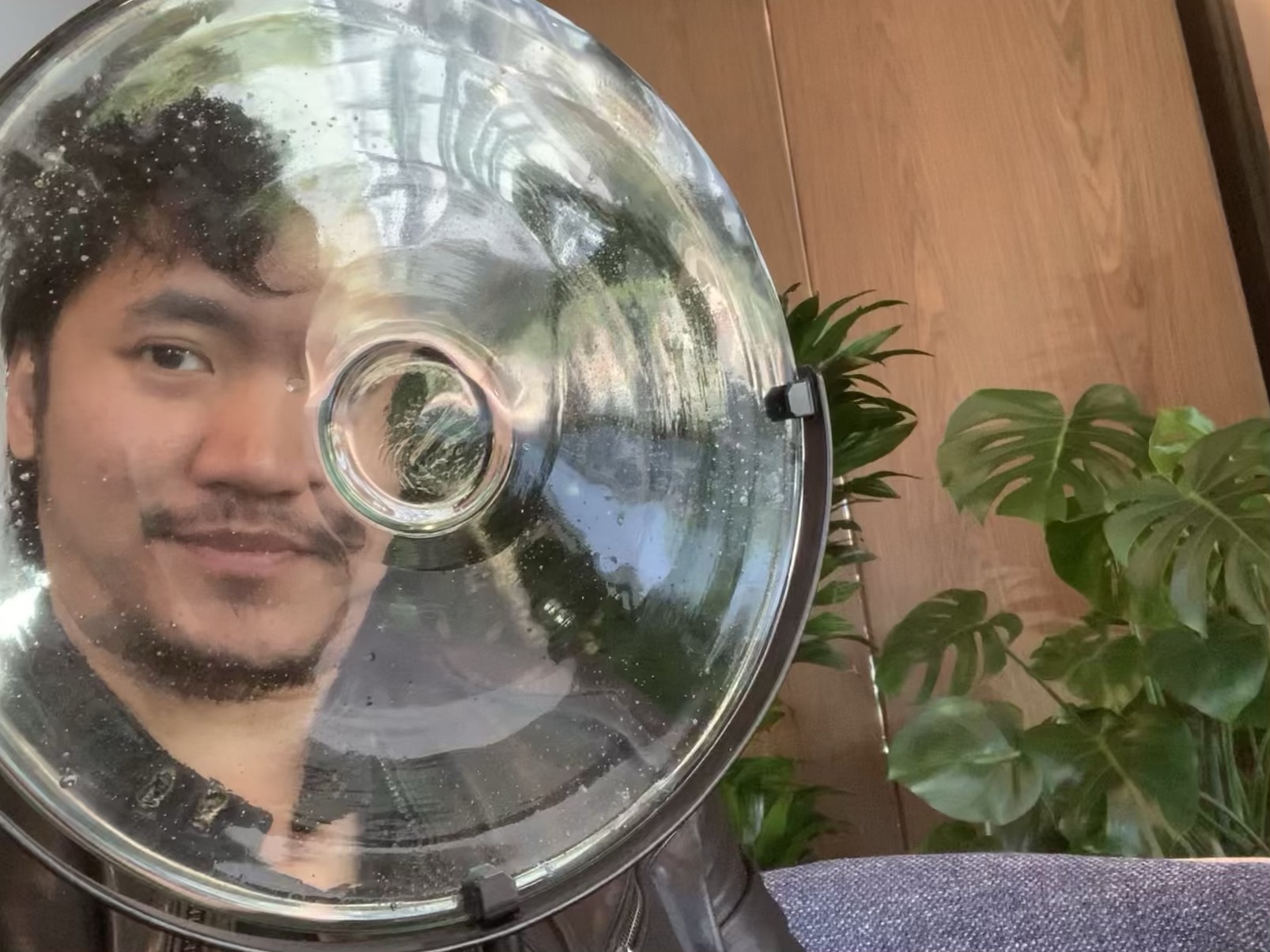We were lucky to catch up with Binh Nguyen duc recently and have shared our conversation below.
Binh, appreciate you joining us today. Did you always know you wanted to pursue a creative or artistic career? When did you first know?
I couldn’t think of a singular moment or influence that catalyzed my breadth of work, my specific focus, or in this case the passion for interdisciplinary art and design. Reflecting back, I suspect that this interest forms subtly, grass rooted, guided by art and design yearning to take material form in the physical world. It’s like the artwork/ an installation is a living being with its own desire to appear into the world. And I’m just a ‘messenger’ representing the ‘unborn’ work to speak to clients and relevant collaborative parties involved.
You might be interested in hearing this… but that first ignition for a life of passion for interdisciplinary art practice is parallel to the human experience of dreaming – and subsequently the series of steps toward physical manifestation of the dream. And if so, I think it has to do with purifying and upgrading my biological capacity to dream more and hearing the instructions from within me in the thought form, the emotional form, the physical instinct, etc. This capacity is especially heightened when the life of a designer is happy, fun, full of love in a variety of aspects, in love, and absorbing more love, upliftment, and the dropping of what’s not me: identities formed from traumas, family patterns, or suggestive agendas broadcasted by the external world.
My early childhood in Vietnam was highlighted by access to the very famous SNES, NES and Sony Playstation 1. This was rare at the time in the local context of Vietnam, and exposure to video games got a bad rap even then for the development of teenager/ early childhood education. Yet fantasies and virtual adventures benefited my creativity, and perhaps that is where my love for 3D visualization started – the ‘first contact’ exposure to the gaming industry.
In regard to the motivation to move to the US from Vietnam, having a father whose career identity is a business man dealing with foreign trades may have impacted my transplant outcome a bit. Studying abroad was trendy at the time. Higher education was also unchallenged by society as a means to progress in life and climbing the social ladder – promising jobs and monetary outcomes in life. Sounds heavy and not freeing, doesn’t it? You can get a sense here that was the heavier and hybrid state of my early life: lack, have not, and easily infiltrated by external and societal prescriptive ideas of how to live.
Looking back, perhaps the journey to the US has been about earning a life from my own artistic endeavor, not a life that was given to me by others. It was a big move to reclaim personal sovereignty.
Great, appreciate you sharing that with us. Before we ask you to share more of your insights, can you take a moment to introduce yourself and how you got to where you are today to our readers.
I’m an interdisciplinary artist with over a decade of experience in 3D design, architectural design, fabrication design engineering, immersive spatial experience design, art consulting and physical placemaking activation as well as a specialist in CGI photorealistic visualization workflow with a strong focus on creating high-quality marketing 3D renderings and experimental lighting/ reflection 3D simulation. My current ‘home away from home’ at work is with SPMD, a global collaborative studio of designers, fabricators, and curators that tell your story with a human-centered lens through art curation, design, architectural installations, wayfinding, custom furniture, and environmental graphics. We work with a variety of clients including brands, public entities, museums, agencies, developers, architects, and designers.
My work encompasses visionary placemaking contributions to spanning world-class technology campuses with immersive themed conference rooms, European pharmaceutical workspaces, agriculture & life sciences research institutes, entertainment agency headquarters, brand activation environments, luxury retail, runway productions, and exhibitions.
Perhaps an effective and digestible entry point to this question is to share with readers a glimpse of my formal job responsibilities at work:
A 3D design professional is an expert in the creation and development of sophisticated three-dimensional models and visualizations, employed across a diverse array of high-profile industries such as gaming, architecture, industrial design, and cinematic production. These highly skilled designers leverage cutting-edge software, including Blender, Autodesk Maya, and SolidWorks, to craft intricate, lifelike representations of products, environments, and scenes. The process involves a blend of artistic vision and technical mastery, from initial concept design through to the final render.
The primary responsibilities of a 3D design professional encompass the generation of detailed 3D models, the application of advanced texturing and lighting techniques, and the seamless rendering of realistic visual outputs. In certain roles, animation or the simulation of dynamic movement may also form part of the designer’s duties. Achieving excellence in this field requires a thorough understanding of core physical design principles—primarily spatial relationships, how the users move, circulate, interact in the physical site, get inspired and connected in not only the human mental and physical body, but the emotional body, the spiritual body, and perhaps more that are still in the unknowns to us. Our profession requires exceptional problem-solving capabilities to address complex design challenges and meet client specifications.
For more information, please visit our one-of-a-kind Art Consulting & Art Fabrication studio which I’m extremely proud to be a core design contributor:
https://www.instagram.com/spmdesign/
What do you think is the goal or mission that drives your creative journey?
In my career currently the specific focus is dedicated to merging nature, art, and technology.
Nature is always the guiding force in my work. It’s a framework/ pathway already existing for us Earth inhabitants to reference upon. In fact, our ancestors were much more apt at observing and working with Nature during an earlier timeline when “specific modern technologies” were absent. Nature is a role model of technology and efficiency – examples are the complex biological structures of lifeforms seen under the microscope, or ecological systems of our tropical forest where specific species grow in close proximity, pollinate and complement each other. It’s fair to say that many of our modern day applications are simulations of Nature itself. And the stronger my biological link to Nature is – eating well, long walks along the beach every other day, soaking my eyesights with sunset rays, etc, the more complex and exciting ideas emerge from within.
Art is the secondary component [of importance] in my work. The world of Art provides the context of design practice and a platform to connect with an audience of people. Excellent art initiates a conversation with a participant from the inside out, plugging the individual deeper into the thoughts, sensations, feelings, moods that arise within the individual’s bodily experience. Art also challenges the audience to be open minded and facing oneself in deep honesty. A viewer may like the form of this sculpture and dislike the color of that painting – it’s all valid as long as the person is the decider and not giving his power away to external sources such as institutionalized art textbooks and adopting a curated point of view. Additionally I feel that we’re living in a harsh reality filled with chronic fatigue, fears for our own survival, psychological warfare more than ever before and so Art & Creativity are needed much more than ever before to balance life conditions.
And lastly, “modern day construction/ fabrication technology” is the quintessential toolkit to bring the work to life. I’m fortunate and grateful to have met talented other masters of design engineering, electrical and lighting integration, woodworks, metalwork, digital CNC and 3D printing, paint and printing, finishing along this journey. These masters are excited by newness, innovation, hope that can potentiate from the seed of a design idea and pour in the support with passion. Fabrication technologies give us a range of what could be possible so designers like myself have a vague idea of where and when to push and raise the bar further.
The catalyst of my on-going creative ideas arose out of parallel storytelling/ narrative importance between nature and technology of our client – the brand identity. Let’s dive deeper:
1: Technology narrative: everyone knows who the big tech brands are and their dominant presence in our daily life. We have come to rely on the conveniences they offer. Their brand identities are impressive as ever in terms of abundance, resources, innovative infrastructures, and wide spreading influence. These can be translated into the formal design qualities such as monumental scale, systematic and orderly geometry of structures, innovative usage of building materials, etc
2/ Nature narrative: but where do big tech brands come from? What were their origins? Nature provides some answers to this: the physical land context of the Bay area where tech empires stand on. The land has distinctive environment features such as foothill region, ocean [adjacent] region, redwood region, and bay marsh region. These specific environment ecologies are crucial to our design ideas in order to best represent the overarching story of the brand and its context. Or in the case of the Santa Barbara region, the monumental Fig Tree icon holds a special place in the heart of the local human inhabitants. We translate appropriate Nature cues like these into our design.
Nature first. Technology second. As inhabitants of the planet, we must not forget this. It is one of my responsibilities to represent Nature through art + tech and help reconnect people to that purity origin and offset the many synthetic dependency/ hybridity that has made its way to our current reality of life through seemingly strong suggestive social agendas. I’ll give you an example: an art exhibit that features the ability to support and sustain life forms such as algae farming, moss wall, terrarium reminds us about how nature works. Such a lesson can challenge how we value the food we eat – how long it takes for Nature and farmers to provide us those fruits that are wrapped in plastic and displayed in the supermarket. I would even suggest that the absence of understanding about how to work with nature has led us down a part of over consumption/ consumerism and imbalance, which then led to compensation elsewhere and causing harm to the environment.
There is such a thing as nature’s principles and ‘universal laws’ that our human conditions abide by without being able to control. We either are in alignment with these one-way street principles that are supporting our life, or we are out of alignment and are expected to compensate elsewhere.
Let’s talk about resilience next – do you have a story you can share with us?
Not being able to land a full-time offer over a long extended 6 years pushed me to work as a contractor and actively chose the shorter lifespan gigs that I resonated with and felt compelled to contribute to. This endurance solidified my “artist statement.”
My experience of the design market in NYC between 2015-2019 was rather disappointing because of the tight and rather conservative way of running the design business model. That said, it was a specific time where the term “experiential design” or “environmental design” were trendy buzz words that not every professional circles among architecture firms, ad agencies, event design agencies have the universal understanding. For example, we have ad agencies that have commissioned lots of exhibits and installation projects under the pipelines, but the core strength of these agencies are mainly Graphic Design and without experts who understand spatial problem, circulation planning, design engineering. These businesses then outsourced to other design consulting firms and fabrication studios to fill the missing gap. It wasn’t a seamless design built model like how I’m practicing these days – thank goodness we’ve come along much further since in terms of the business model – not many studios can confidently deliver 3D spatial activation experiential design niche from beginning to FDOB delivery to client. I understand it’s a tough economy and everyone is hustling for work to survive, but abusively identifying with the highly technical and academic term “experiential design/ experiential marketing” is misleading and hurts the field in the big picture. I’ve witnessed business owners making false promises about their company capabilities that cannot be kept and intentionally misuse the nomenclature out of survival behavioral patterns because they’re influenced by what the market needs at the time. All of these need to be cleaned up, purified and realigned to an honor system of work collaboration. Perhaps it would ease the constant tension between Art and business profit in our industry.
Then again, having gone past that and saying “no” to the work that is not me, I’m able to establish a type of “artist statement” with clarity and the specialty niche that my contribution is needed in the arena of larger scale/ public art placemaking. That’s the gift of the struggle in my career story.
Contact Info:
- Website: www.studioquadrality.com
- Instagram: https://www.instagram.com/spmdesign/
- Linkedin: https://www.linkedin.com/in/binhnguyen-duc
- Other: Please also pay a visit to the website and Social Media of our incredibly talented collective of art consultants, designers, engineers, art fabricators, producers & project managers at SPMD: https://www.spm-design.com/work/, https://www.instagram.com/spmdesign/








Image Credits
Phoebe Hans, Kelly Numamoto

